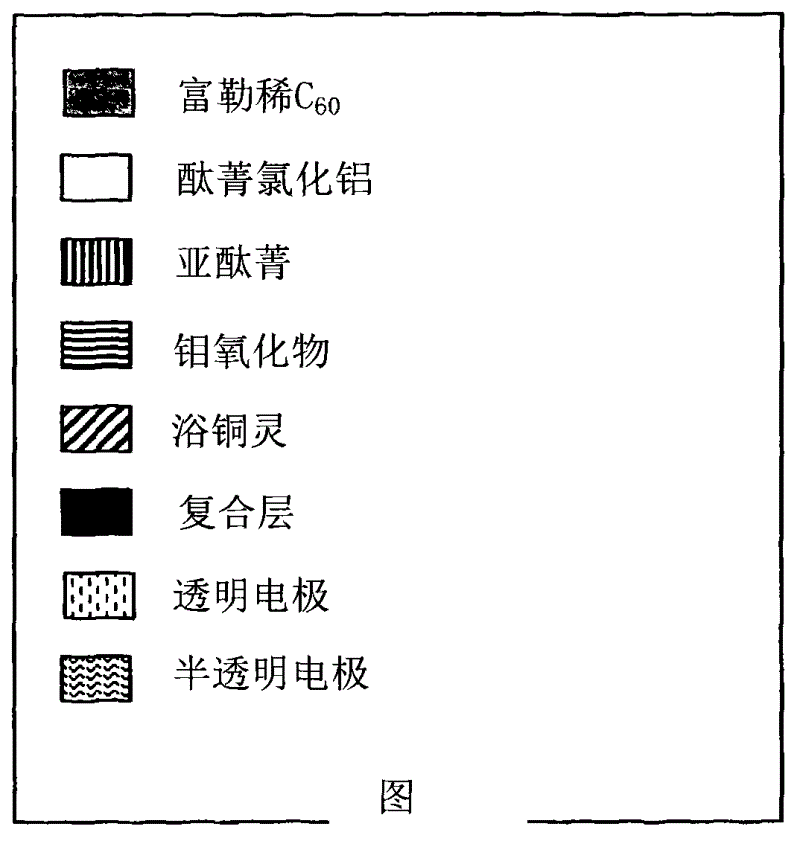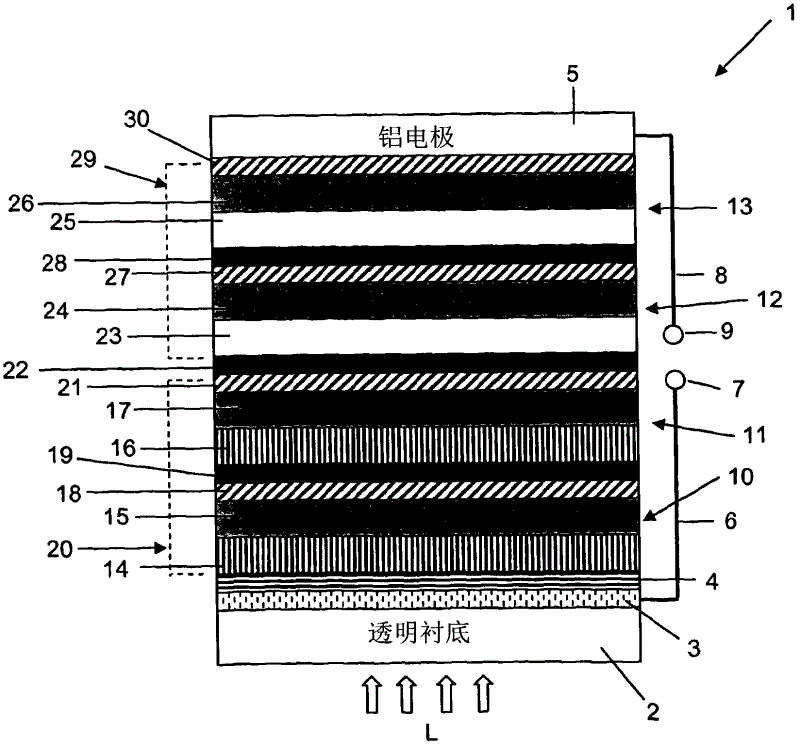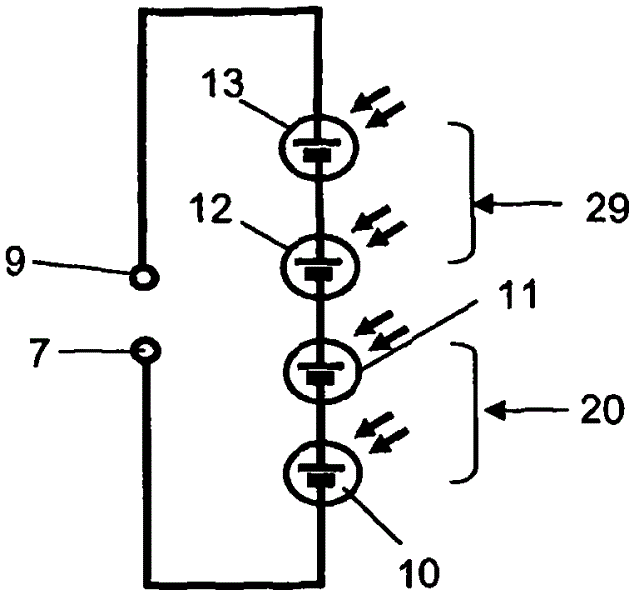Organic photosensitive optoelectronic devices
A photoelectric device and device technology, applied in the field of organic photosensitive optoelectronic devices, can solve the problems of increased light absorption and inability to harvest incident light
- Summary
- Abstract
- Description
- Claims
- Application Information
AI Technical Summary
Problems solved by technology
Method used
Image
Examples
Embodiment Construction
[0036] figure 1 show as figure 2 , 4 and 5 show layer legends. Fullerene C 60 Used as a receptor layer. Chloro-aluminium phthalocyanine and subphthalocyanine were used as the donor layer. Molybdenum oxide serves as an interlayer between the anode and the donor layer of the subcell. Bathocuproine (BCP) was used as an exciton blocking layer. The composite layer can be formed in the form of a thin translucent metal layer of silver, aluminum or titanium, or it can be a metal such as indium tin oxide (ITO), zinc indium tin oxide or gallium indium tin oxide. ) and other transparent layers of conductive oxides, or can provide discontinuous recombination centers. The transparent electrode may be a transparent layer of a conductive oxide, such as indium tin oxide (ITO), indium tin zinc oxide or indium tin gallium oxide. The translucent electrodes can be thin metallic layers of silver, aluminum or titanium.
[0037] figure 1 An organic semiconductor photovoltaic device 1 accor...
PUM
 Login to View More
Login to View More Abstract
Description
Claims
Application Information
 Login to View More
Login to View More - R&D
- Intellectual Property
- Life Sciences
- Materials
- Tech Scout
- Unparalleled Data Quality
- Higher Quality Content
- 60% Fewer Hallucinations
Browse by: Latest US Patents, China's latest patents, Technical Efficacy Thesaurus, Application Domain, Technology Topic, Popular Technical Reports.
© 2025 PatSnap. All rights reserved.Legal|Privacy policy|Modern Slavery Act Transparency Statement|Sitemap|About US| Contact US: help@patsnap.com



